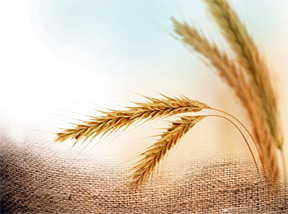Know Your Fiber Facts
By Dr. Donald L. Hayes
We all know we need fiber, so why do so many of us not get enough? Maybe it's because the
Standard American Diet (S.A.D.) features an ever-increasing variety of processed, fiber-stripped foods, and maybe it's because not enough people know where to get fiber or why it's part of a healthy diet. Well, that all changes today once you learn the facts about fiber.
Dietary fiber, often referred to as "roughage," is the edible portion of plant cell walls that is resistant to digestion, but is an extremely beneficial component of our diets. Fibers such as vegetables, fruits, nuts, and whole grains also have high amounts of vitamins and minerals necessary for healthy body function. And of course, a huge side benefit of eating foods rich in fiber is that they taste good!
Not only does fiber help ward off many diseases, but it's also been shown to aid in weight loss by reducing food intake at meals. This is because fiber-rich foods take longer to digest and thus result in an increased feeling of fullness and satiety. In addition, the more gradual absorption slows the entrance of sugar into the bloodstream, thereby preventing large blood glucose and insulin spikes that can lead to binge eating.
Soluble vs. Insoluble
There are two types of fiber: soluble and insoluble. Both soluble and insoluble fibers are undigested, meaning they are not absorbed into the bloodstream. Instead of being used for energy, fiber is excreted from our bodies. Although neither type is absorbed by the body, they do have different properties when mixed with water, hence the designation between the two.
Soluble fiber is "soluble" in water; when mixed with water, it forms a gel-like substance and swells. Soluble fiber has many benefits, including moderating blood glucose levels and lowering cholesterol. Pectin and gums are among the better known soluble fibers. Advantages of consuming soluble fiber include the production of salubrious compounds (antioxidants, anti-aging and anti-carcinogenic compounds) during the fermentation process.
Insoluble fiber does not absorb or dissolve in water; it passes through our digestive system in close to its original form. Insoluble fiber offers many benefits to intestinal health, including a reduction in the risk and occurrence of colorectal cancer, hemorrhoids, and constipation. Cellulose and lignins are two insoluble fibers. Among the advantages of eating insoluble fiber is its ability to increase bulk and therefore soften stools and shorten transit time through the GI tract.
Due to the overlap in function between the two types of fiber and the difficulty in measuring each type, the National Academy of Sciences is recommending that the terms soluble and Insoluble gradually be eliminated and replaced by specific beneficial effects of each fiber. Thus. you may hear less about soluble vs. insoluble fiber in the future.
Foods Rich In Fiber
 Plant foods contain both types of fiber in varying degrees, according to the plant's characteristics. Examples of foods rich in soluble fiber are fruits, vegetables, brown rice, barley, and nuts. Most of insoluble fibers come from the bran layers of cereal grains. Examples of foods rich in insoluble fiber are wheat bran and whole-grain breads and cereals. Remember, both are important for good health, so your diet should include a balance of foods rich in both types.
Plant foods contain both types of fiber in varying degrees, according to the plant's characteristics. Examples of foods rich in soluble fiber are fruits, vegetables, brown rice, barley, and nuts. Most of insoluble fibers come from the bran layers of cereal grains. Examples of foods rich in insoluble fiber are wheat bran and whole-grain breads and cereals. Remember, both are important for good health, so your diet should include a balance of foods rich in both types.
How Much Fiber Do We Need?
There is no recommended daily allowance (RDA) for fiber, but the American Dietetic Association recommends eating 20-35 grams of dietary fiber per day or 10-13 grams for every 1,000 calories in the diet. The average American significantly falls short of the recommended amount of fiber, consuming on average only 5-10 grams per day.

